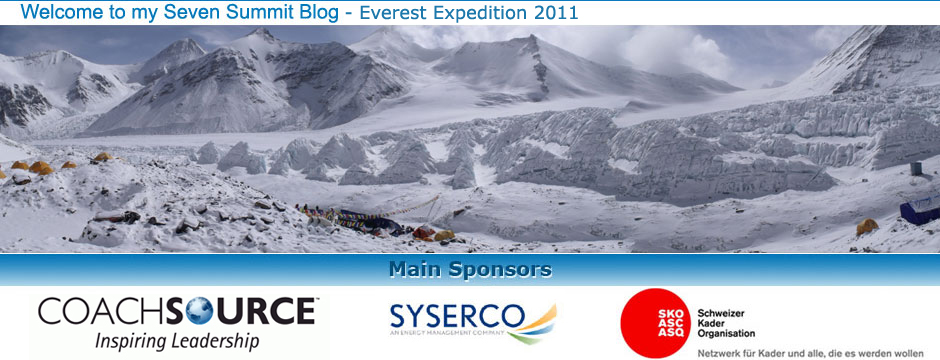Finally, the Tibetans decided to fix the rope on May 20. Lhakpa made a decision to move on fast. We left ABC on May 18 and moved up to the North Col into Camp 1 at 7,060m/23,298ft. The next day we moved to 7,900m/26,070ft. There was no official camp at that altitude, but he decided to move up to the summit in two days from Camp 1, versus, three days, what most Western expeditions normally do. The idea was to beat the “traffic”, which was expected on May 21 (over 100 climbers and Sherpas…). It was the first day when the rope officially was open, and of course, all expeditions and climbers have been waiting for this moment since weeks. Also the weather forecast looked good on this day.
We arrived on “Camp 2.5” at 7,900m/26,070ft around 4:00pm, had a soup and relaxed for a few hours. At 8:00pm we left for the summit push… The night was not too cold and most teams were still in the process of installing themselves at Camp 3 (which we never used). We climbed the whole night up some very steep parts (over 70 degrees) and reached the ridge at 8,600m/28,380ft, shortly before the “Second Step”, around 4:45am on May 20. During the whole night we had made only a few very short stops and I realized what it means to put your body at its limit…
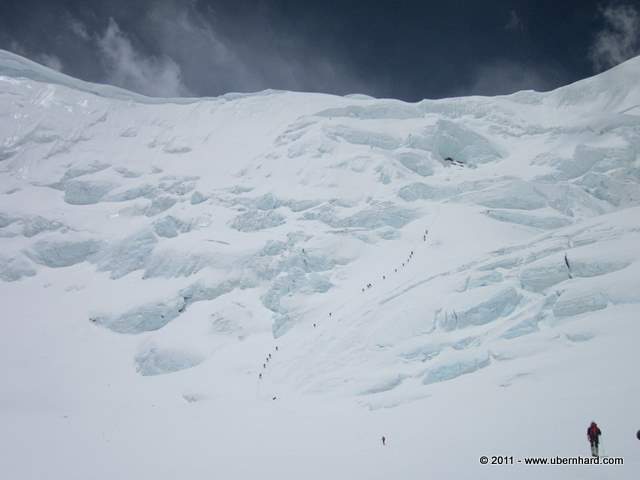
On the way up to Camp 1 at the North Col.
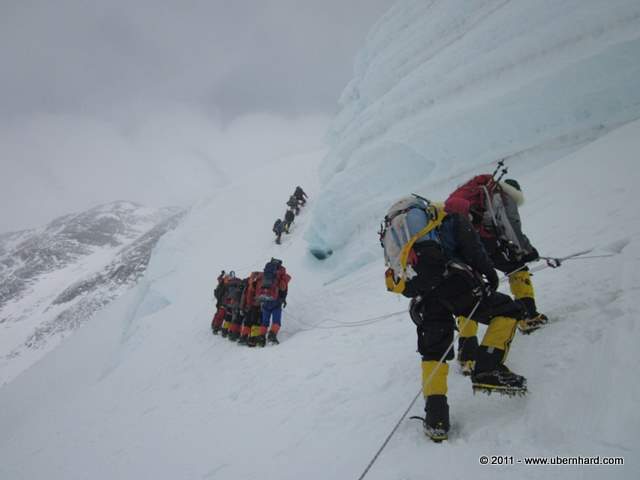
Some bottlenecks on the way up…
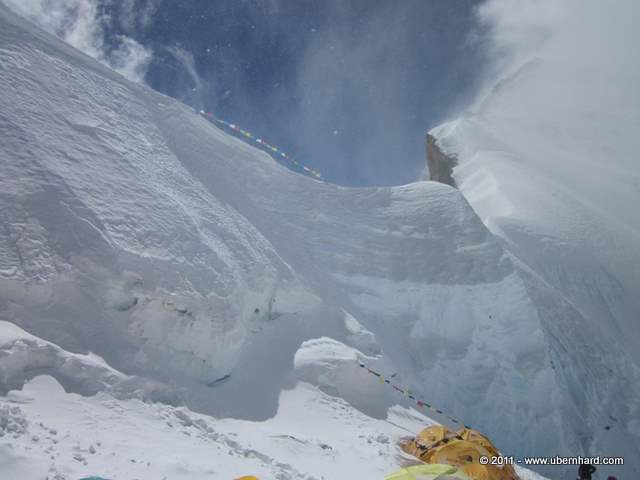
Camp 1 at the North Col – A good starting position to move on higher.
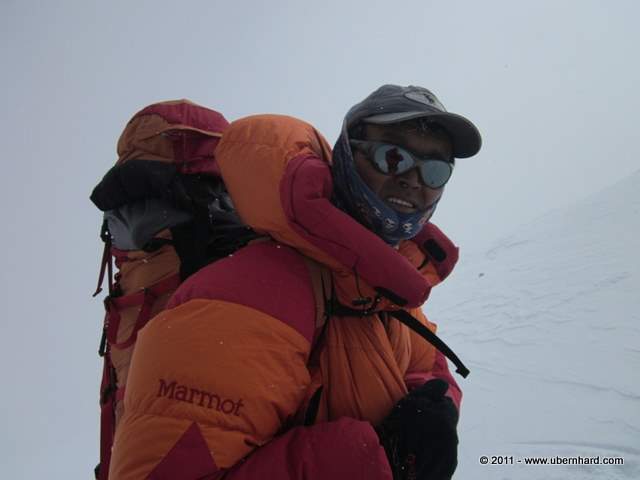
Lhakpa is ready to move up higher.
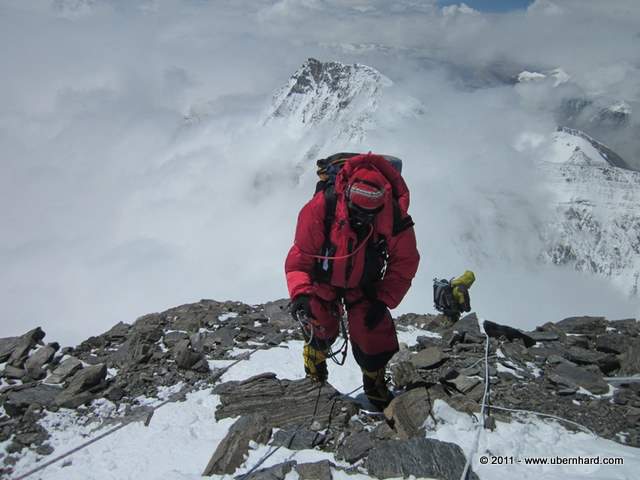
Step by step up this rocky mountain…
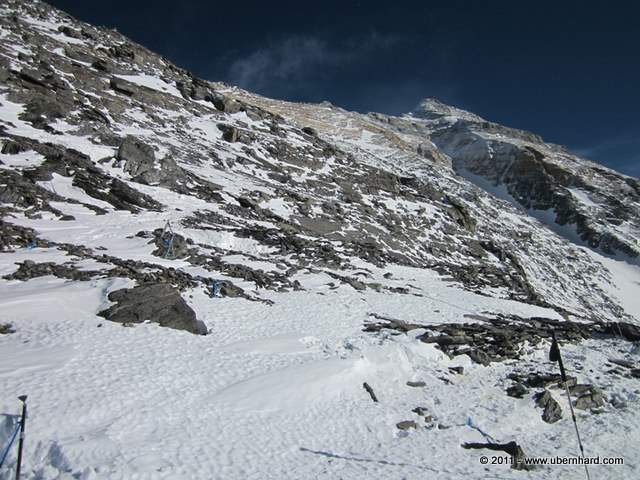
A steep way up – and all this in one night?
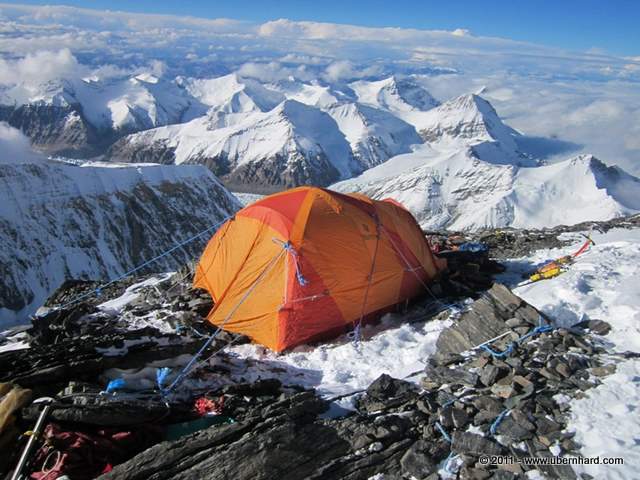
A few hours rest on a windy place at 7,900m/26,070ft.
It was at that altitude, 8,600m/28,380ft when Lhakpa decided that we should not go any further for the following reasons: (1) Bad weather is moving up and it may be a problem on the way down; (2) Too many people were approaching the “Second Step” from the top (the Tibetan and Chinese team had just finalized the rope and came down) which would mean that we would have to wait for a long time; (3) I may be to slow on the way down if we move to the top and all the way down. At the point, I was disappointed, but I had told myself before, whatever Lhakpa would decide at a high altitude, I would just accept. He knows the mountain better than many other people and has summited Everest 14 times. Also, we just had passed two death bodies and it is not a good place to be on the upper part of Everest if the weather changes…
Meanwhile it was about 5:00am and we observed a beautiful sunrise. The day woke up and what a view from 8,600m/28,380ft… There was no other mountain that high and it was beautiful view towards the Tibetan Plateau and the along Himalaya range. What an experience… I looked up t to the Everest summit and it was only 250m/825ft higher…
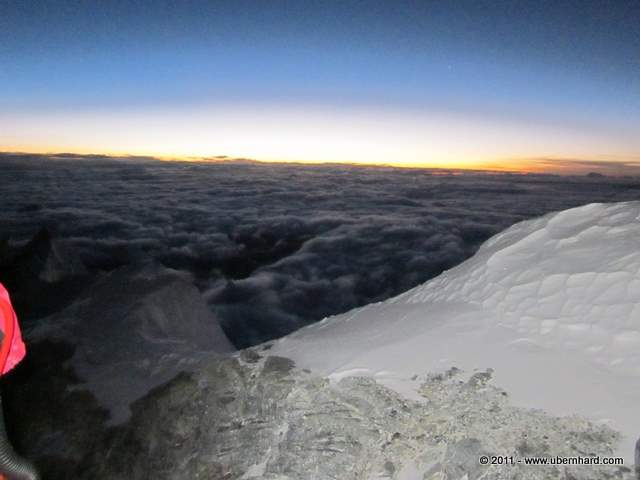
Yes, there is some bad weather down there…
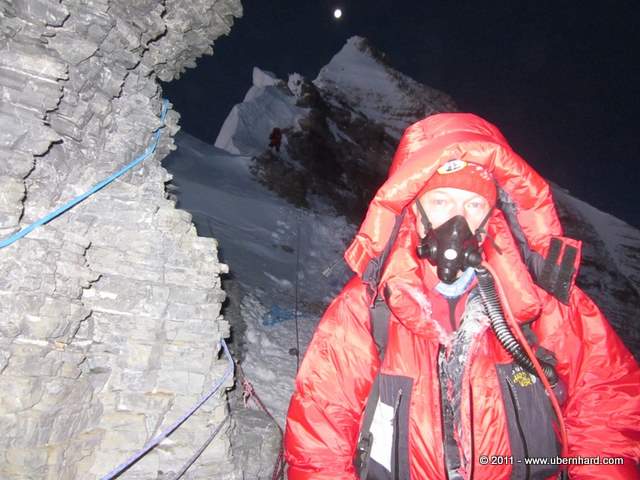
At 8,600m/28,380ft with the Everest summit in the background.
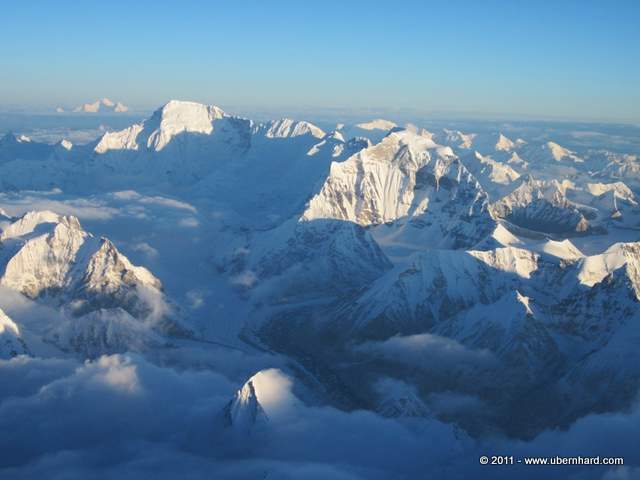
The view from 8,600m/28,380ft towards Tibet with Cho Oyu in the foreground and Shishapangma in the background.
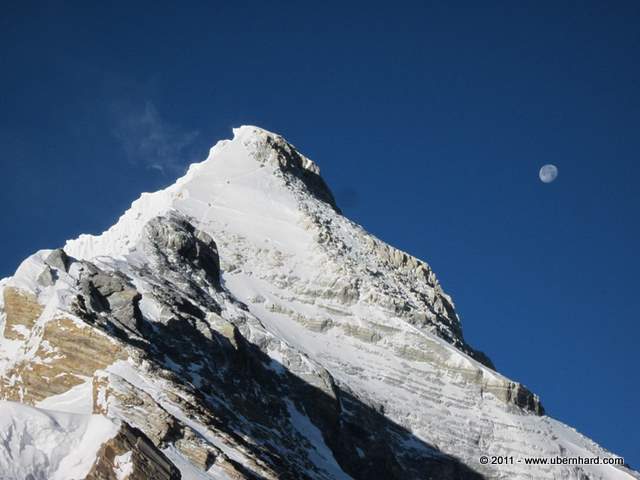
Everest summit from the North side – less than 250m/825ft vertical distance away…
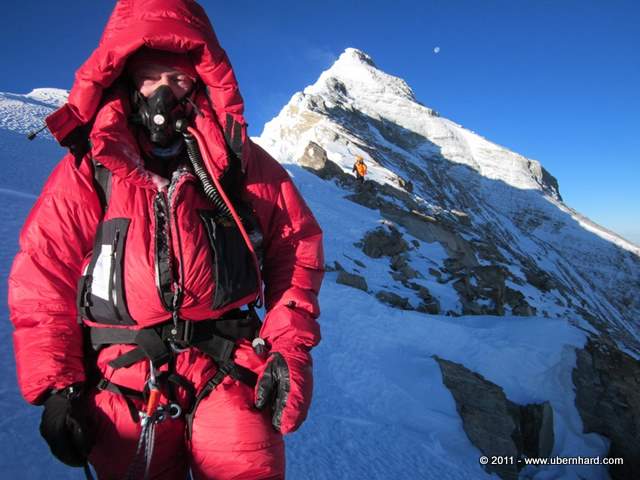
Disappointed but safe – Moving down…
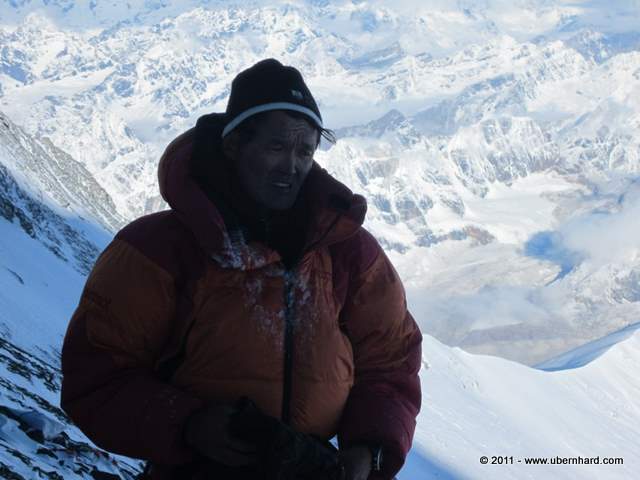
Lhakpa is concerned about the weather lower down…
After this short break, we moved down fast to our camp at 7,900m/26,070ft, took a short break, and moved down further. And Lhakpa was right: A storm had moved up already to Camp 2 and it was snowing. Visibility was at times less than 5m/16.5ft and the only way down was holding on to the rope. On both sides of the rope were deep cliffs and crevasses but nothing was visible. The weather seemed to get worse, and since the Sherpas were heavily loaded, Ramos, one of the Sherpas, told me that I can go ahead. I tried to follow another group of Sherpas because my goal was not to be the leading person on the rope in this kind of weather. Unfortunately, about 20 minutes later, one of the Sherpas collapsed under his heavy load. I tried to speak to him, but there was no answer. I moved fast down, and told his team members, which did not see the incident, to stop and check what happen to him. I waited until one of the team members checked his conditions, and it turned out that he was OK, but very exhausted.
Now my strategy, following someone did not work anymore. Suddenly, I was the first person on the rope and the visibility seemed to get worse. I was still at about 7,300m/24,090ft. I waited for a moment and nobody came down the rope… At that point I decided to move on and get out of this bad weather. I told myself that nothing should happen to me as long as I stick to the rope. Also, I climbed up this rope a few days ago and I was hoping to remember most parts. But not in a whiteout… I learned a little bit later.
And then it happened: Unexpectedly, the rope ended… I could not believe it! I did not remember that part and it was for me the worst scenario that could happen in this kind of weather. I decided to wait for the next climber coming down and was hoping that he or she would know where to go from here. There was no way that I would start walking without a rope in any direction because I remembered on the way up the cliffs and crevasses on both sides of the rope.
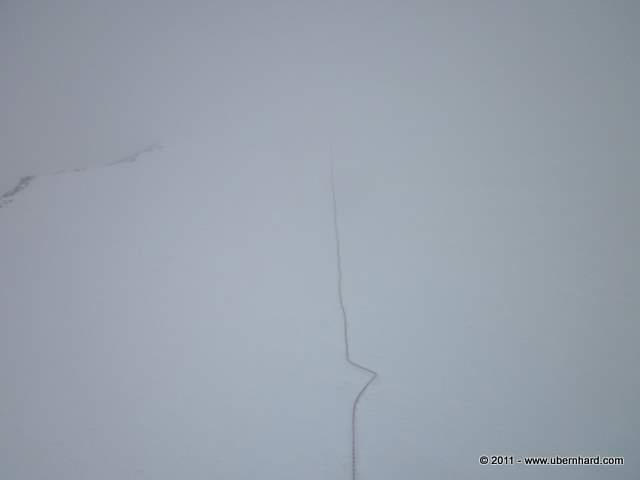
Where does the rope go?
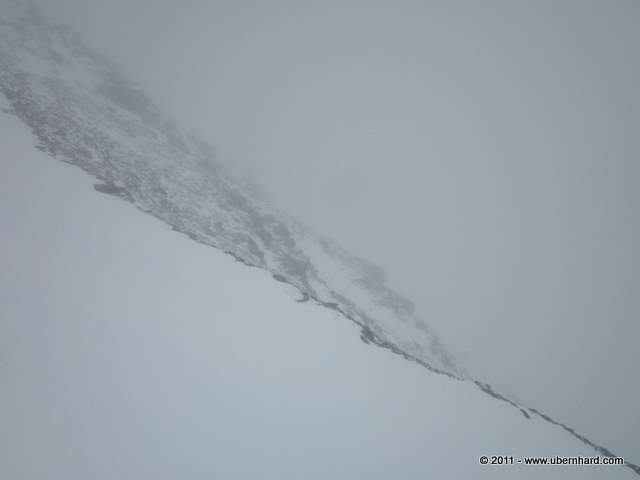
Visibility gets lower and lower…
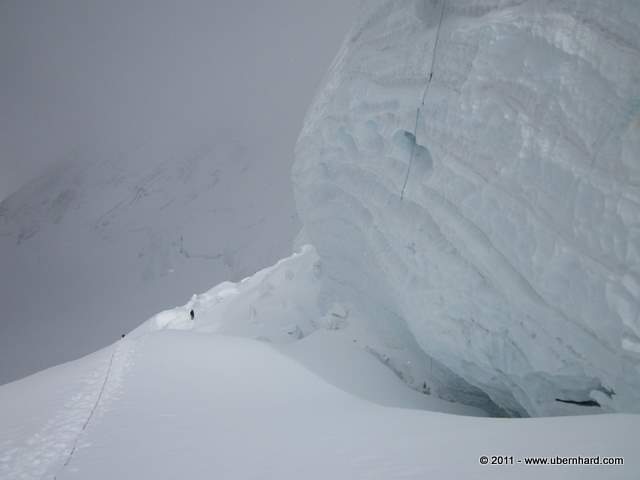
Moving down faster and faster…
I waited for a while and finally the group of Sherpas arrived out of the snow. The person that had collapsed earlier seemed to be OK again. I was released because I assumed that for sure they would know the way from here. When the first two arrived, I asked them if they know the way from here. Unfortunately, they did not speak any English. Also, they did the same as I did: waiting at the end of the rope. Once everybody was there, they talked together, and suddenly one took off and disappeared in the snow. Slowly, the others would follow, but not in the same track. It looked more like searching to me than knowing where to go. I observed the scenario and decided not to follow.
Slowly, I got a little bid cold. I did take my down suite off at 7,900m/26,070ft because I was so hot from coming down fast. Lhakpa suggested to keep it on, and once again, he was right… Finally, I decided to climb again uphill to make sure that I am not getting freezing cold. I remembered that this was Everest and that things can change fast here. After climbing up for about 20 minutes, I stopped. Nobody was coming down during this time. Did everybody stop in one of the camps? I realized that it would take me at least five to six hours in this weather condition to climb up to Camp 2 at 7,500m/24,750ft. I turned back, went to the end of the rope and took a straight line from there into the nowhere… After about 50m/165ft I found the continuation of the rope. I moved quickly along this rope and arrived in Camp 1 about 15 minutes later. I waited for Lhakpa and Ramos, and after a short break we moved down to Advanced Base Camp. It had been a long day, but Chomolungma has been good to me: I was a little bit tired, but healthy! And the motto: “Getting to the summit is optional. Coming down is mandatory” worked for us. And all this because of Lhakpa’s decision at 8,600m/28,380ft… Thank you!!! Unfortunately, we learned the next day, that one member of a Western Expedition team did not make it back on May 21 from almost the same spot.
During the next two days we started packing our equipment at ABC, organized the Yaks to bring everything down and finally walked down to Base Camp on May 23. On the way down we heard that another big expedition team which was still at the mountain had to cancel their climb because of bad weather and strong wind.
I don’t want to stop on this mostly negative note. It seemed that May 21 was the best day in terms of weather and many climbers and expedition members summited that day. There were probably over 100 climbers and Sherpas on the rope that day (it was the first day when the rope was officially open) and beside the tragic accident mentioned earlier, it was a good day for most climbers. Lhakpa’s strategy was to avoid that day because of the extreme high number of climbers on the rope and the bottlenecks it would create. Bottlenecks means waiting and long waiting means frostbites. I fully supported his decision and I am glad that we avoided that busy day. The whole climb has been an extraordinary journey for me, even without summiting! Thanks to Lhakpa’s leadership and Pasang’s and Ramos’ support, we made it safely back to ABC.
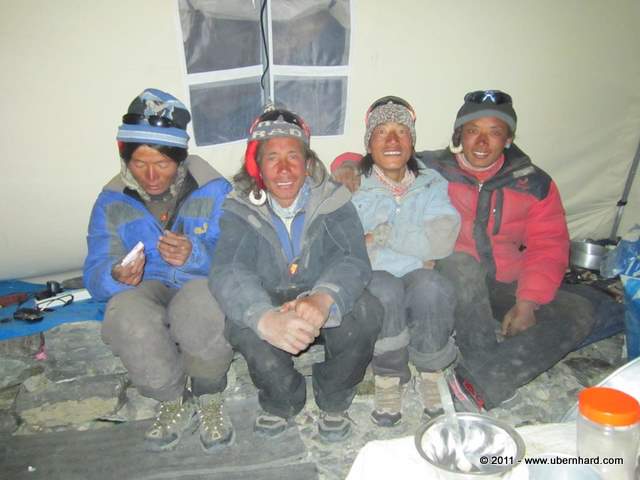
Four Tibetan Yak divers who walked five days (!!!) to pick up expedition equipment.
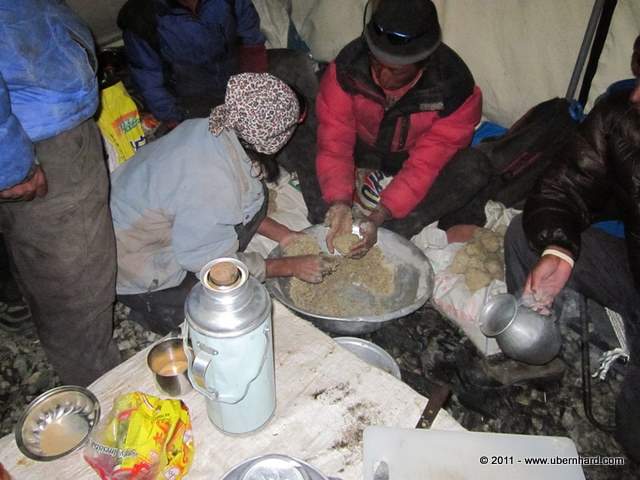
Making dinner for the Yaks at 6,400m/21,120ft: Menue: Flour balls – 10 per animal.
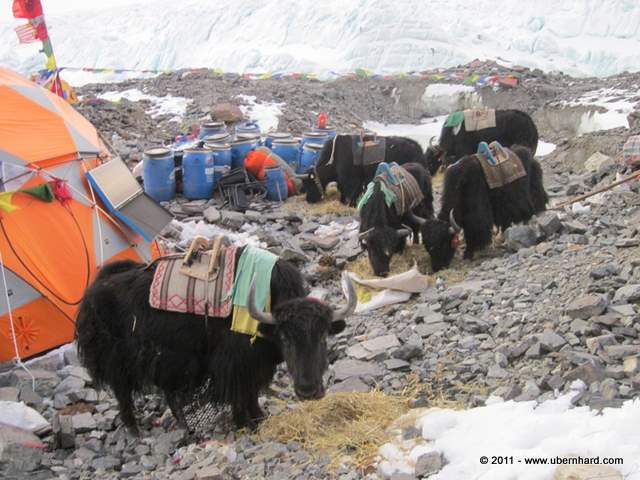
Without these fantastic animals, no expedition could make it so easily to ABC.
